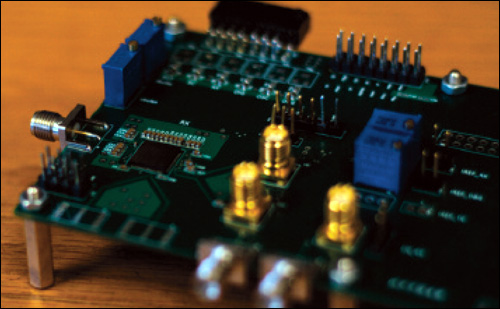Radio frequency identification industry experts predict that this year more than 2 billion passive high-frequency and ultrahigh-frequency tags will be used, and within five years, that number will reach 100 billion. Many people are concerned that the tags will fill the waste stream with metals that don’t biodegrade, and tagged cardboard boxes and packaging will hamper recycling.
John Rogers, a professor of materials science at the University of Illinois, may have a solution. He and a team of researchers at the university’s Frederick Seitz Materials Research Laboratory have spent the past five years developing electronic devices that are completely biodegradable. The team’s initial focus was on sensors and other devices that could be inserted into the human body for monitoring or therapeutic reasons. The goal was to create devices that would break down and be absorbed harmlessly into the body.
A few years ago, Rogers began looking into ways to create a biodegradable RFID tag, because the electronics are less complicated than those of most medical sensors, and the future need was obvious. In March, he presented a paper at the 247th National Meeting & Exposition of the American Chemical Society, detailing his team’s latest research, which includes work on printable RFID antennas made of metals that biodegrade and development of a biodegradable substrate on which passive HF and UHF RFID transponders can be mounted.
“Right now, we have biodegradable versions of the components of the tag, except for the chip, and we are pretty close to doing the chip as well,” Rogers says. “We have been working with a conventional foundry to modify some of the processing steps to create a biodegradable RFID chip. We’ve done some feasibility tests. We’re not ready to announce we have successfully done that, but I am quite confident that it can be done.”
Replacing the copper antenna with metals that biodegrade, such as tungsten or magnesium, does affect the tag’s performance. But Rogers says the hit on performance is modest, and the benefits far outweigh the costs. “The performance of the tag isn’t reduced by a factor of 10 or anything like that,” he says. “And we can increase the performance by increasing the thickness of the metal. There’s no free lunch, but I don’t think the reduction in performance will be a barrier to adoption.”
Rogers has patented the technology behind the biodegradable tags through the university, and has formed a startup to begin commercializing the technology. He believes his team could have a prototype of a fully functioning, entirely biodegradable tag by year’s end, and the technology could be commercially available in two to three years. Several RFID tag companies have expressed interest in collaborating on the development of green tags. Mother Nature is, no doubt, pleased.


